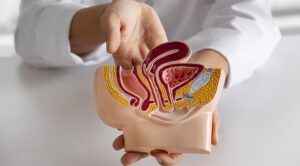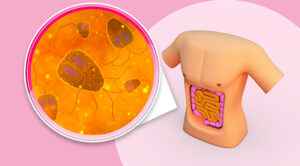The pancreas is a vital organ responsible for digestion and blood sugar control. When it malfunctions—whether from inflammation, enzyme deficiency, or tumors—it can cause a range of symptoms that shouldn’t be ignored. Early recognition of pancreas problems symptoms is crucial for timely diagnosis and treatment.
In this guide, we’ll cover the 7 most common symptoms of pancreas problems, their causes, and when to seek medical help.
What Does the Pancreas Do?
Located behind the stomach, the pancreas is a gland that:
- Produces digestive enzymes to help break down proteins, fats, and carbohydrates
- Regulates blood sugar through hormones like insulin and glucagon
When the pancreas becomes inflamed, damaged, or diseased, both digestion and metabolism suffer.
Top 7 Symptoms of Pancreatic Problems
The pancreas is located in the belly, behind the stomach, a long, flat gland. It swells up towards the right side and measures six inches in length. The small intestine and pancreas create digestive enzymes. For example, a hormone called insulin is produced as a result of this rise; it processes sugar, aids in digestion, and forms insulin cells, which in turn process glucose. Thus, the pancreas’ inherent mechanism is necessary for proper digestion.
Top Pancreas problems symptoms are:
1. Severe Upper Abdominal Pain (Often Radiating to the Back)
One of the most common and serious pancreas problems symptoms is persistent, intense abdominal pain. This typically:
- Begins in the upper middle or left abdomen
- Radiates toward the back or below the shoulder blade
- Worsens after eating, particularly fatty meals
- May ease when leaning forward or curling up
This pain is characteristic of both acute and chronic pancreatitis, and it’s often the first sign of pancreatic cancer.
2. Nausea, Vomiting & Digestive Distress
Inflammation or enzyme dysfunction in the pancreas often leads to:
- Persistent nausea
- Vomiting after meals
- Bloating or a constant feeling of fullness
These symptoms arise because undigested food—especially fats—can’t be properly processed, leading to frequent digestive discomfort.
3. Unexplained Weight Loss & Loss of Appetite
When pancreas function is compromised, the body may struggle to absorb nutrients. This can result in:
- Unintentional weight loss
- Lack of appetite
- Signs of malnutrition such as fatigue or muscle weakness
These issues are especially common in chronic pancreatitis and pancreatic cancer due to poor enzyme production or ductal obstruction.
4. Oily or Pale Stools (Steatorrhea)
Another telltale symptom of exocrine pancreatic insufficiency is steatorrhea, which includes:
- Bulky, greasy stools that float
- A foul odor and pale appearance
- Fat malabsorption leading to deficiencies in vitamins A, D, E, and K
This occurs when the pancreas doesn’t produce enough digestive enzymes to break down fats.
5. Jaundice (Yellowing of Skin & Eyes)
If inflammation or a tumor in the pancreas blocks the bile ducts, bilirubin builds up, causing:
- Yellow-tinted skin and whites of the eyes
- Dark urine and pale stools
- Itching skin
Jaundice is often an alarming pancreas problems symptom, particularly associated with pancreatic cancer or bile duct compression.
6. Sudden-Onset Diabetes or Blood Sugar Fluctuations
Since the pancreas produces insulin, any damage can disrupt blood sugar regulation. This may lead to:
- Newly diagnosed diabetes, especially in those over age 50
- Increased thirst, frequent urination, fatigue, and blurry vision
- Blood sugar spikes or drops without clear cause
New-onset diabetes may sometimes be an early indicator of pancreatic cancer or chronic pancreatitis.
7. Chronic Fatigue & Weakness
Finally, long-term pancreatic dysfunction often leads to:
- Persistent tiredness
- Low energy levels
- Muscle weakness
- Mental fog
These symptoms occur as nutrient absorption falters and blood sugar regulation becomes erratic.
Other Notable Signs in Severe Cases
Some rare but critical indications of severe pancreatic injury include:
- Grey Turner’s Sign: Bruising of the flanks
- Cullen’s Sign: Bruising around the belly button
These suggest internal bleeding or necrosis from acute pancreatitis, and require immediate medical attention.
Patients may also exhibit fever, rapid heartbeat, and abdominal tenderness—all pointing to inflammation or systemic disturbance.
Why Early Recognition Matters
Most pancreatic disorders—like pancreatitis or pancreatic cancer—start subtly. Because the symptoms are often mistaken for common digestive issues, diagnosis is frequently delayed. Pancreatic adenocarcinoma, for example, is usually detected only after it spreads, making treatment more difficult.
Public health reports highlight that symptoms such as unexplained weight loss, sudden diabetes, or persistent pain should prompt immediate evaluation—especially in individuals over 50.
Common Cause and Risk Factors
Understanding what triggers pancreas problems helps identify those at risk:
- Heavy alcohol use and smoking
- Gallstones blocking the pancreatic duct
- High triglyceride levels
- Genetic predispositions (e.g., cystic fibrosis, autoimmune pancreatitis)
- Diabetes, obesity, metabolic conditions
Chronic inflammation—especially from alcohol or gallstones—is the leading cause of chronic pancreatitis, which can over time lead to enzyme insufficiency and diabetes.
Diagnosis: What to expect
If doctors suspect pancreas problems, they typically order:
- Blood tests measuring pancreatic enzymes (amylase, lipase), liver function, and glucose levels
- Imaging tests such as ultrasound, CT scan, or MRI to assess inflammation, blockages, or tumors
- Stool tests for fat content or fecal elastase to detect enzyme insufficiency
- Endoscopic procedures like ERCP for visualizing ducts or removing blockages
Clinical signs like the absence of bowel enzyme function, elevated liver markers, and unintended weight loss help pinpoint the condition and severity.
Treatment & Management
Treatment strategies depend on whether the condition is acute or chronic:
- Acute Pancreatitis: Hospital care with IV fluids, pain management, fasting or feeding tube support, and addressing underlying causes such as gallstones or alcohol use.
- Chronic Pancreatitis: Ongoing management of pain, lifestyle editing (especially reducing alcohol and smoking), low‑fat diet, enzyme replacement therapy, vitamin supplementation, and diabetes treatment if needed. In severe cases, surgery or endoscopic interventions may be required.
Close follow-up is essential to monitor nutritional status, pancreas function, and risk of complications like pancreatic cancer.
When to Consult a Specialist
Seek medical attention if you experience:
- Intense, persistent upper abdominal pain
- Jaundice, unexplained weight loss, or sudden diabetes
- Chronic nausea, vomiting, or fatty stools
- Quickly worsening fatigue or digestive symptoms
If you develop multiple pancreas problems symptoms, especially in combination, early consultation with a gastroenterologist or pancreas specialist is strongly recommended.
Conclusion
Your pancreas plays a critical role in digestion and blood sugar regulation. Recognizing pancreas problems symptoms—such as upper abdominal pain, jaundice, sudden diabetes, greasy stools, unexplained weight loss, nausea, and fatigue—can make all the difference in diagnosis and treatment. Early intervention improves treatment outcomes and prevents serious complications like malnutrition or cancer. Don’t ignore warning signs. Talk to a doctor if you notice any of these symptoms.





